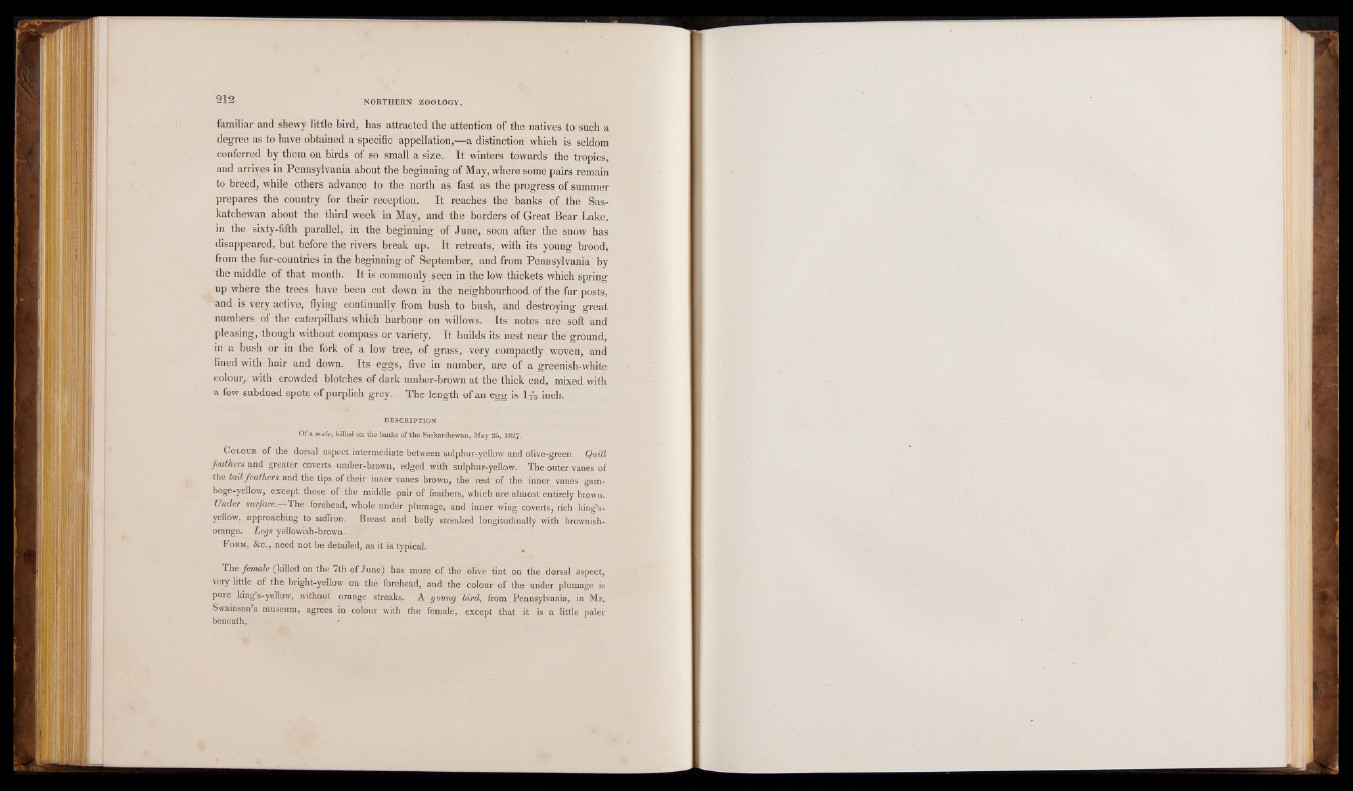
NORTHERN ZOOLOGY.
familiar and shewy little bird, has attracted the attention of the natives to such a
degree as to have obtained a specific appellation,—a distinction which is seldom
conferred by them on birds of so small a size. It winters towards the tropics,
and arrives in Pennsylvania about the beginning of May, where some pairs remain
to breed, while others advance to the north as fast as the progress of summer
prepares the country for their reception. It reaches the banks of the Saskatchewan
about the third week in May, and the borders of Great Bear Lake,
in the sixty-fifth parallel, in the beginning of June, soon after the snow has
disappeared, but before the rivers break up. It retreats, with its young brood,
from the fur-countries in the beginning of September, and from Pennsylvania by
the middle of that month. It is commonly seen in the low thickets which spring
up where the trees have been cut down in the neighbourhood of the fur posts,
and is very active, flying continually from bush to bush, and destroying great
numbers of the caterpillars which harbour on willows. Its notes are soft and
pleasing, though without compass or variety. It builds its nest near the ground,
in a bush or in the fork of a low tree, of grass, very compactly woven, and
lined with hair and down. Its eggs, five in number, are of a greenish-white
colour, with crowded blotches of dark umber-brown at the thick end, mixed with
a few subdued spots of purplish-grey. The length of an egg is 1* inch.
DESCRIPTION
Of a male, killed on the banks of the Saskatchewan, May 25, 1827.
C olour of the dorsal aspect intermediate between sulphur-yellow and olive-green. Quill
feathers and greater coverts umber-brown, edged with sulphur-yellow. The outer vanes of
the tail feathers and the tips of their inner vanes brown, the rest of the inner vanes gam-
boge-yellow, except those of the middle pair of feathers, which are almost entirely brown.
Under surface. The forehead, whole under plumage, and inner wing coverts, rich king’s-
yellow, approaching to saffron. Breast and belly streaked longitudinally with brownish-
orange. Legs yellowish-brown.
Form, &c., need not be detailed, as it is typical.
Thq female (killed on the 7th of June) has more of the olive tint on the dorsal aspect,
very little of the bright-yellow on the forehead, and the colour of the under plumage is
pure king’s-yellow, without orange streaks. A young bird, from Pennsylvania, in Mr.
Swainson’s museum, agrees in colour with the female, except that it is a little paler
beneath.